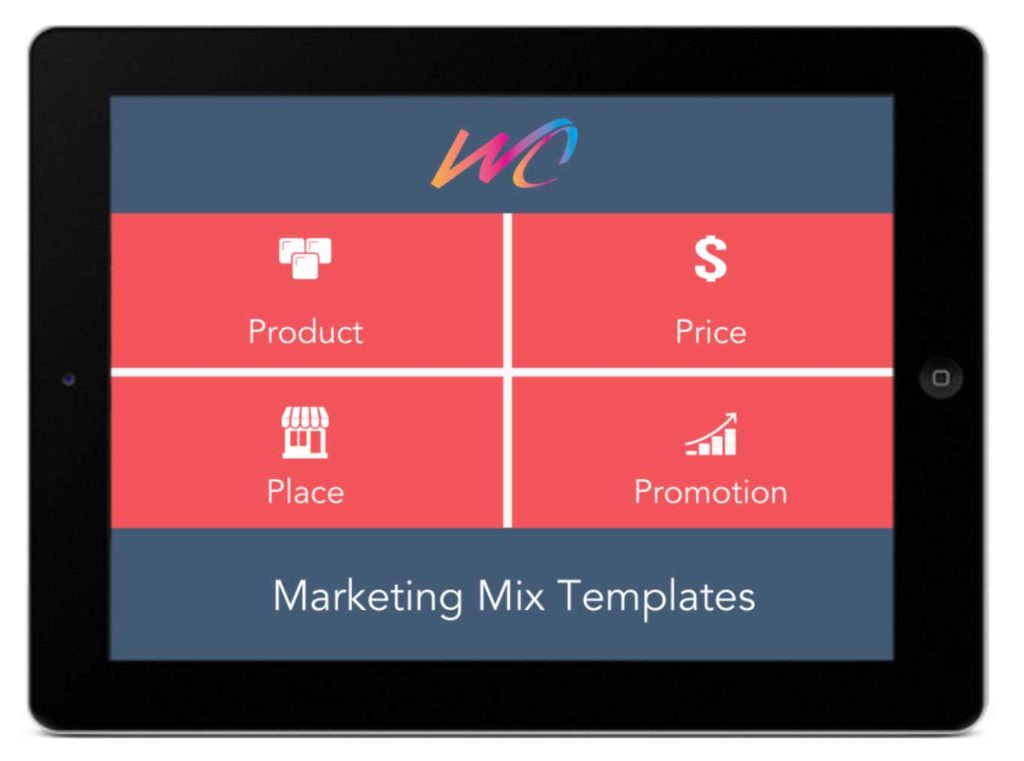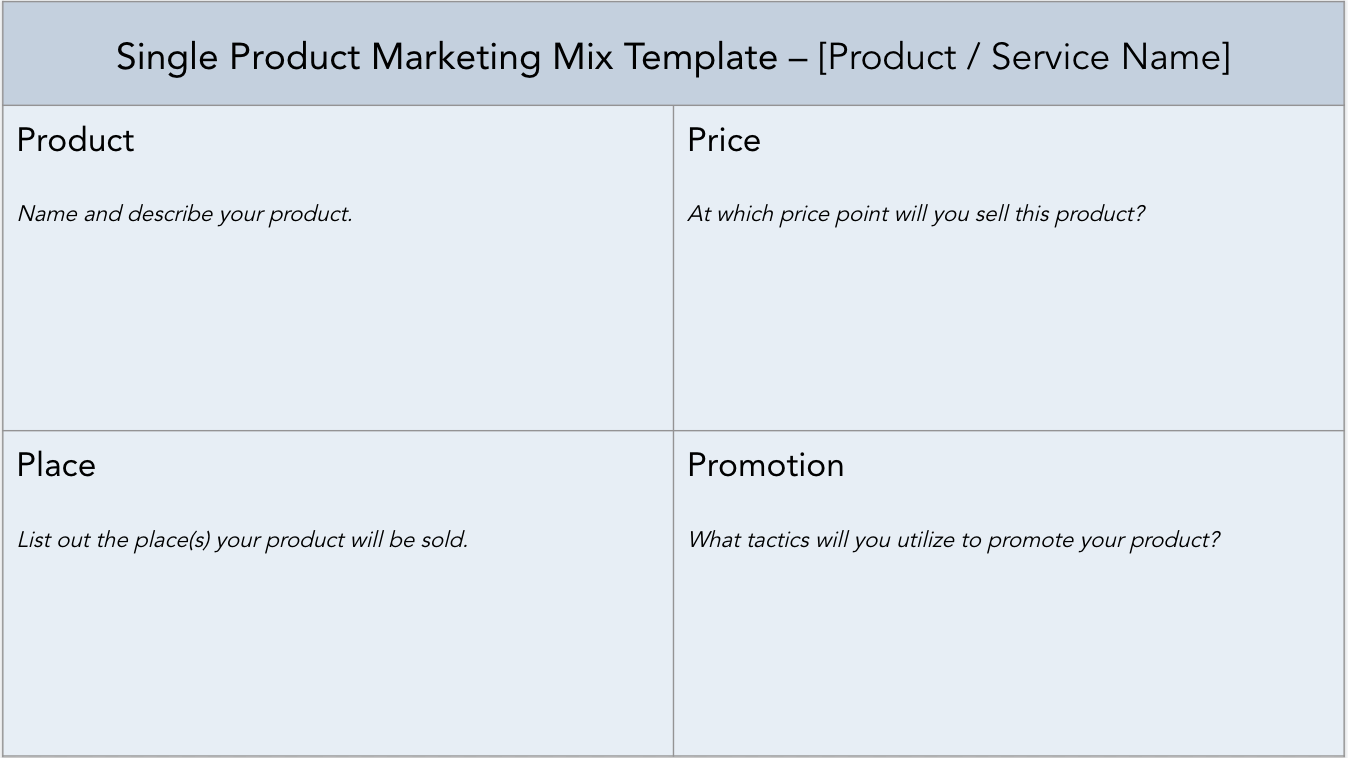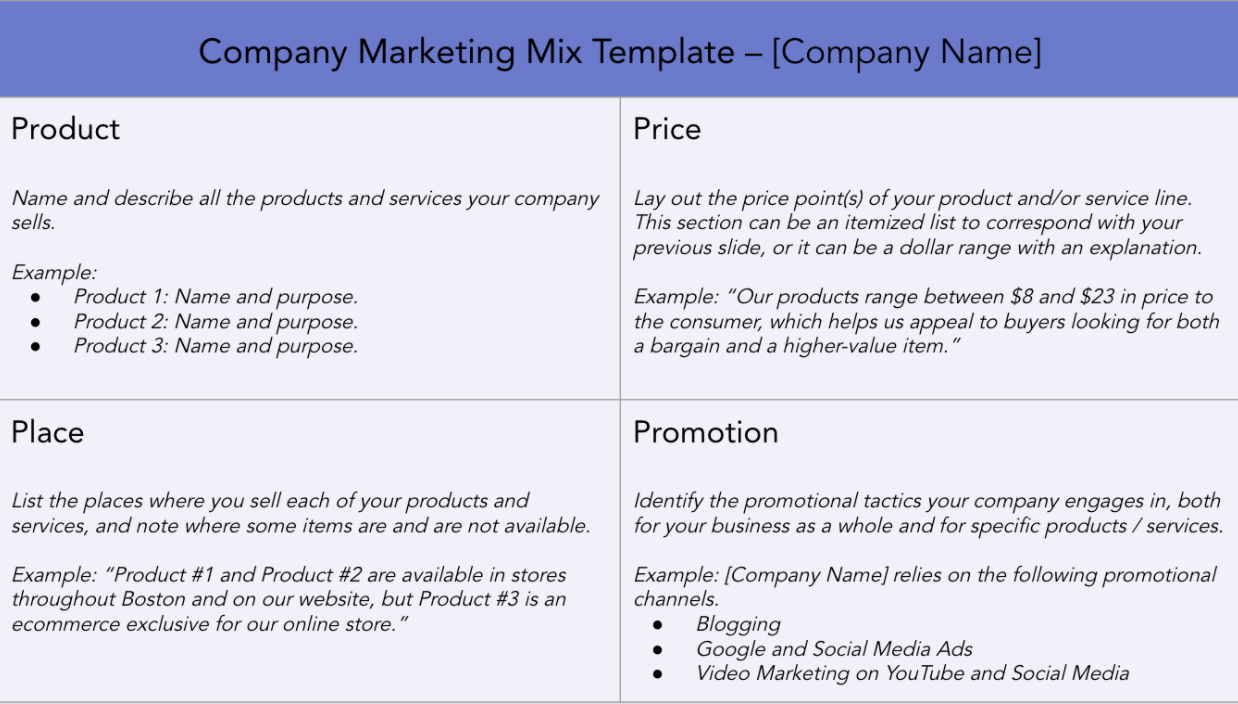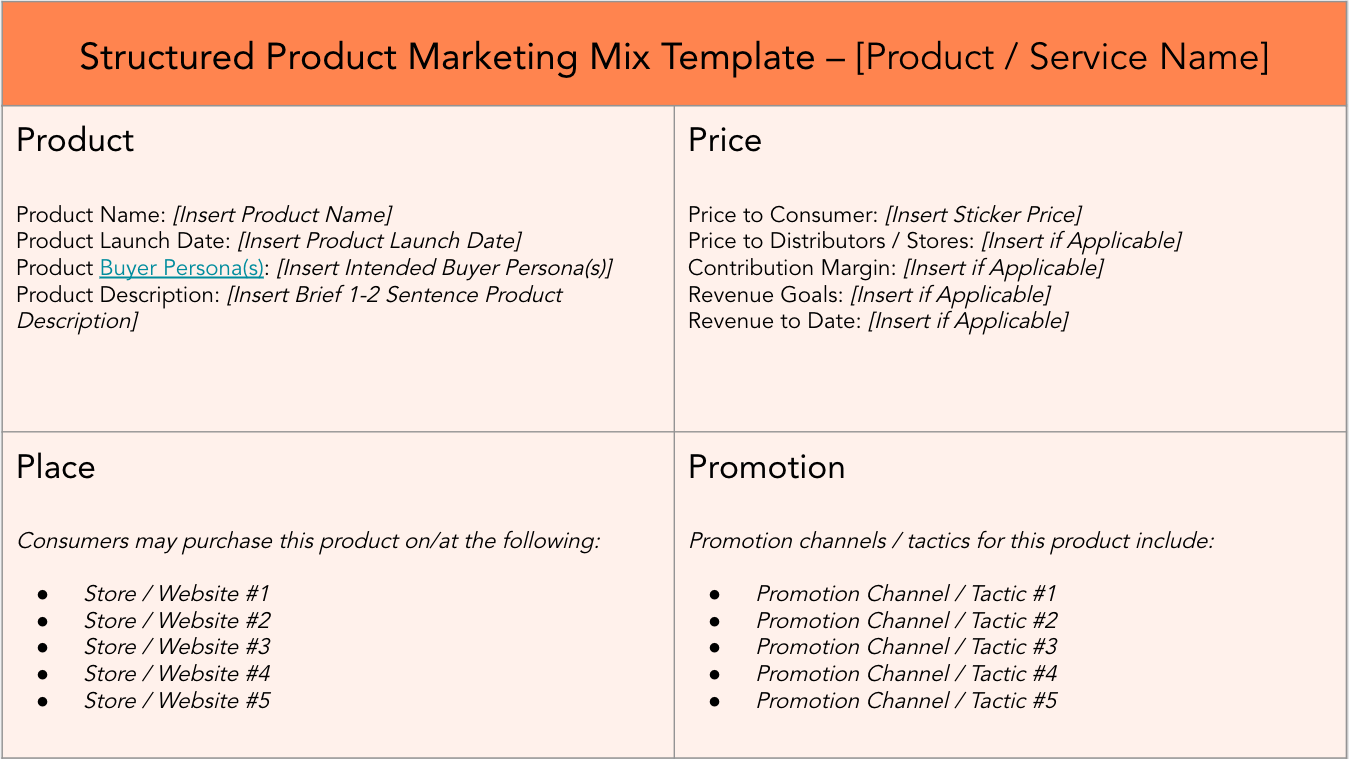Written by Whitney Cullens & AJ Beltis @AJBeltis
MARKETING | 9 MIN READ
One of the first things you’re taught in your Introduction to Marketing class is that marketing can be best explained using the marketing mix — also known as the four P’s.
They are — and say ’em with me, because if you took that class, you know these four words by heart:
- Product
- Price
- Place
- Promotion
One of the first things you’re taught in your first marketing internship or job, however, is that marketing entails so much more than can be simplified in a four-section marketing mix matrix.
Still, there’s an undeniable benefit of marketing teams organizing their work into the marketing mix framework.

Marketing truly is about teams and individuals working together to promote a product in the right place at the right price point. Efforts beyond this scope are essential, but they do all stem off of this foundation of the marketing mix.
Here, we’re going to dive into what a marketing mix is and how to develop a successful marketing mix strategy for your own company.
→ Free Resource: 4 Marketing Mix Templates [Access Now]
What is a Marketing Mix?
The marketing mix refers to the actions a company takes to market its product(s) and/or service(s). Typically, it acts as a framework for breaking down the four key components of marketing — product, price, place, and promotion.

This framework has roots back to the 1940’s and has been evolving ever since. While some elements have been added or tweaked over the years — most notably for the modern digital age — the core elements of the marketing mix (i.e. the four P’s) have remained consistent for decades.
Featured Resource: Marketing Mix Templates

Need a way to visualize your marketing mix to share it with your employees or investors? Use these four marketing mix templates to organize your initiatives and activities by the right section. Click here to download them now.
Marketing Mix Elements
The core elements of a marketing mix are product, price, place, and promotion — known as the four P’s of the marketing mix. When perfected and synchronized, these elements provide a well-rounded approach to marketing strategy.
1. Product
Product refers to what your business is selling — product(s), service(s), or both. The bulk of the work in this element is typically done by product marketers or managers. Nailing the product element of the marketing mix means doing extensive research and development, understanding the need for the product, developing a product launch plan and timeline, and educating customers and employees — especially salespeople — on the product’s purpose.
2. Price
Price refers to the price point at which you’ll sell your product(s)/service(s) to consumers. Arriving on this dollar amount requires consideration of multiple pricing strategies, analysis of similarly priced products in your market, and insights from consumers through surveys and focus groups. Price speaks to positioning in the market, the speed at which you want to penetrate your market, and your company’s revenue goals and profit margin.
3. Place
In the marketing mix, place refers to where your product or service will be sold. For tangible products, this will include physical locations such as your own store, or a retailer where your product will be resold. It can also include the other methods where your products can be purchased, like online or over the phone.
4. Promotion
Promotional activities are those that make your target market aware and excited about what you’re selling. While this does include paid initiatives like commercials and advertising, promotion also entails organic initiatives like word-of-mouth marketing, content marketing, and public relations.
Other Elements
While the marketing mix can often be simplified down to the 4 P’s, the expansion of the scope of marketing in recent years has resulted in more P’s added to the list.
For example, Smart Insights includes the following elements in its marketing mix definition:
- Process, or the large internal initiatives taken to support a product launch, such as including salespeople in goal setting.
- People, which can refer to your buyer, market, and target audience, or your internal team responsible for launch.
- Partners, or who you’ll be working with outside of your company, such as distributors or co-marketing partners.
Some of the other P’s can include:
- Payment, or how transactions will be held and processed.
- Physical evidence, or anything tangible pertaining to your product or service, like any materials needed to complete your service or deliver your product.
- Packaging, or anything pertaining to the physicality of your product, like how it looks or how it’s packaged.
These other marketing mix elements should be utilized as you see fit for your projects. However, every good marketing mix should rely on a thorough exploration of those first 4 P’s of product, price, place, and promotion.

![How to Develop a Successful Marketing Mix Strategy [+ Templates]](https://whitneycullens.com/wp-content/uploads/2017/05/Screen-Shot-2020-10-31-at-11.59.17-PM.png)



